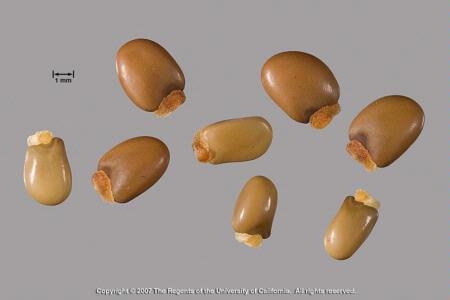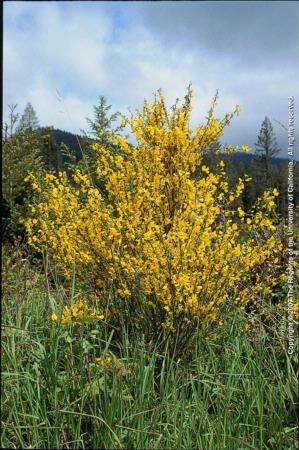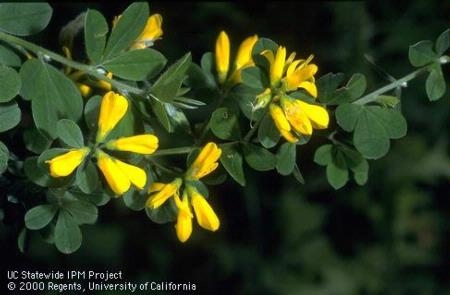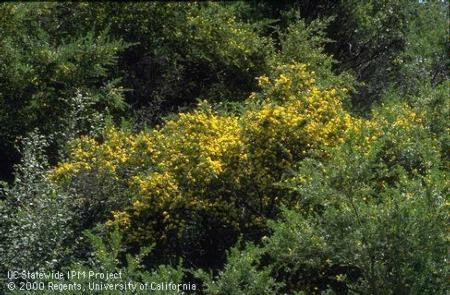Scotch broom (Cytisus scoparius) was introduced into North America from Europe in the mid-1800s. It was initially used as an ornamental, but due to their fast growth were also used for erosion control. Unfortunately, these fast-growing shrubs quickly crowd out native plants and offer very little to local wildlife. They are a problem in our local watersheds. Like many other invasive plant species, Scotch broom is a dangerous fire hazard.
Scotch broom can grow up to 10 feet tall and can live up to 25 years. They have an abundance of yellow flowers from April through June. Each plant produces approximately 20,000 seeds each year. Seed pods ripen during the summer months. The plant ejects its seeds several feet away with small popping explosions. About 40% of seeds germinate immediately, while some others germinate the following year. However, the remaining seeds can remain dormant for up to 50 years making long-term management difficult.
Scotch broom is able to increase nitrogen levels in soil, which increases soil fertility. This is advantageous to other non-native plants that thrive on high nitrogen levels, but is another blow to local native plants as they do not grow as well in these conditions.
You can help reduce the problems from Scotch broom by not planting them in your yard. There are many alternative native plants that have similar attributes but are not invasive. If you have them in your yard it is best to remove them. Please see UC ANR’s Scotch Broom publication for additional information and removal advice.
Attached Images:



